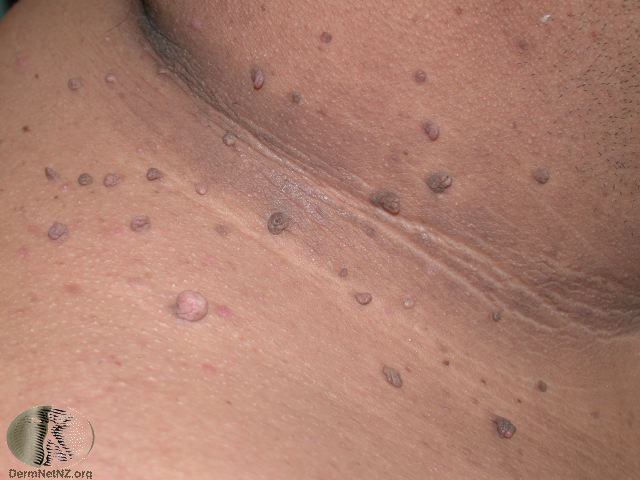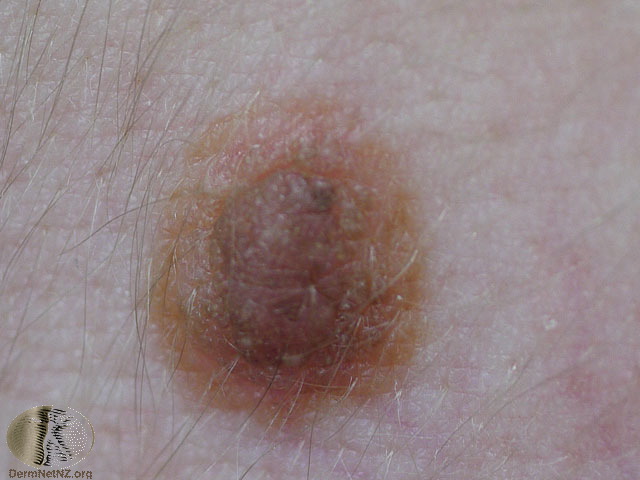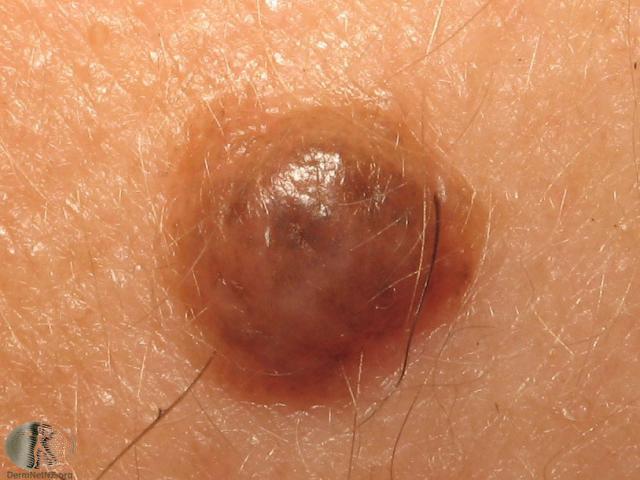Everything you need to know about Benign Skin Lesions
So you have a skin spot, it has been checked by your GP or in a Full Body Skin Check at Geelong Veins Skin & Laser, the good news is it is not cancerous, but you don’t like it and are wondering if it can be removed? Read on…
Benign Skin Lesions
(benign = non cancerous, non malignant)
What do benign skin lesions look like? What are their names? How can they be treated?
Let us run through the top 7 benign skin conditions that we assess and manage.
1. Seborrhoeic keratoses. Also known as senile warts or seborrhoeic warts.



“Seborrhoeic keratoses images” by DermNet New Zealand is licensed under CC BY-NC-ND 3.0 NZ
Seborrhoeic keratoses are more common as you get older, but can also have a familial tendency. The precise cause of seborrhoeic keratoses is not known. They can be treated with a number of methods – cryotherapy ( freezing), laser or shave currettage. A consultation to assess the type, number and location of seborrhoeic keratoses is necessary to provide individual advice on the best method for each patient.
2. Cherry angiomas. Also known as Campbell de Morgan spots, angiomas or cherry spots.

“Cherry angioma images” by DermNet New Zealand is licensed under CC BY-NC-ND 3.0 NZ
Cherry angiomas are common. They are often found on the chest or torso. They are made up of small clusters of blood vessels. Cherry angiomas can easily be treated with a particular laser that emits light that is attracted to the haemoglobin within the blood vessel, closing these vessels from within. A large cluster of cherry angiomas can all be treated in the one session.
3. Skin tags



“Skin tag images” by DermNet New Zealand is licensed under CC BY-NC-ND 3.0 NZ
Skin tags are soft little protruding pieces of skin that occur in areas that rub. Most commonly they occur in the armpit area, the neck, groin and under the breasts. Small skin tags can also occur on the eyelids. They can be easily treated with cryotherapy and/or excision.
4. Warts, papillomas. Also known as verruca.


“Viral warts images” by DermNet New Zealand is licensed under CC BY-NC-ND 3.0 NZ
Warts are caused by the human papilloma virus ( HPV). They commonly affect the fingers and hands, or the soles of the foot (where they are called papillomas). The HPV virus is a common commensal on the skin which is frequently passed around the community with exposure to communal floors, pools, showers (for the feet), or shaking hands and touching surfaces with the hands. They are more common in childhood. The body’s immune system may prevent some people from ever suffering warts, others will get a wart and it will clear on it’s own with the immune response over time. If warts or papillomas are sticking around there are two treatments that can prompt the immune system to clear the virus faster – cryotherapy ( freezing) or laser treatment. This may require one or several sessions.
5. Freckles. Also known as naevi, lentigines or ephilides.



“Brown spots and freckles” by DermNet New Zealand is licensed under CC BY-NC-ND 3.0 NZ
Freckles are not medically dangerous or concerning. They are more common in fair skin types and will be more obvious after sun exposure. Some people love their freckles, others do not. Laser or broadband light therapies can fade or remove freckles.
6. Moles. Also known as melanocytic naevi.


“Moles” by DermNet New Zealand is licensed under CC BY-NC-ND 3.0 NZ
Moles are another type of skin lesion that is benign. Prior to any treatment or removal of a mole, it is important to have the spot recently diagnosed by a doctor to rule out cancer. Moles can be removed with several methods, and will require an individual assessment of the type, size and body position to determine the best treatment. Mole removal may involve a laser treatment or a shave or excision method.
7. Birthmarks.


“Vascular malformation images” & “Congenital melanocytic naevus” by DermNet New Zealand is licensed under CC BY-NC-ND 3.0 NZ
There are two main types of birthmarks – vascular (made up of prominent blood vessels under the skin) and melanocytic (brown or tan flat spots occurring due to increased melanin in an area of skin. As the name suggests they are present from birth or shortly after. Birthmarks can be faded or removed with laser treatments. Different lasers (with different wavelengths of light) are required depending on whether the birthmark is vascular or melanocytic. Several treatments are usually necessary. Treatments may attract a medicare rebate depending on size/location and which practitioner treats the lesion.
If you would like to know more about any of these benign skin lesions or how they are treated visit our clinic to speak with our GP Dr. Barbra Ward, or one our dermal therapists.
Was this page helpful?
 Share
Share



